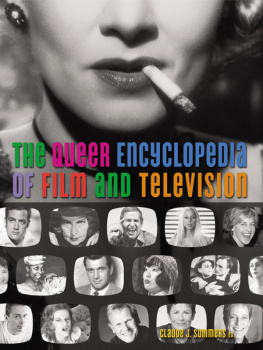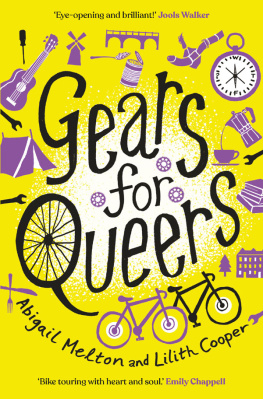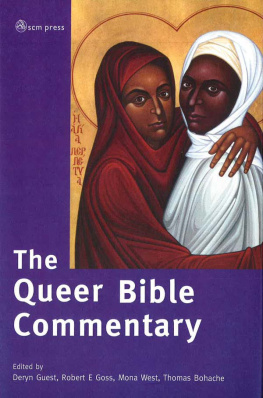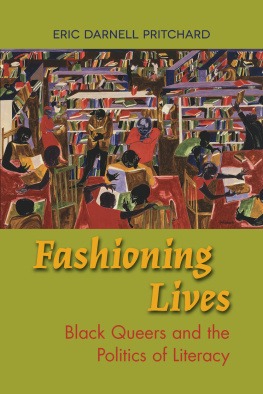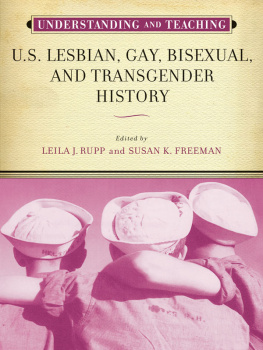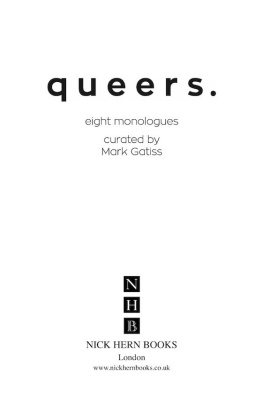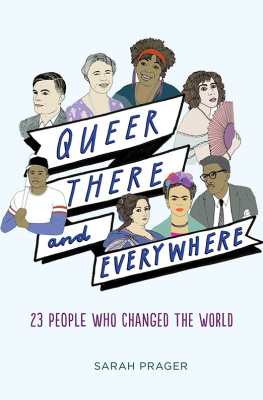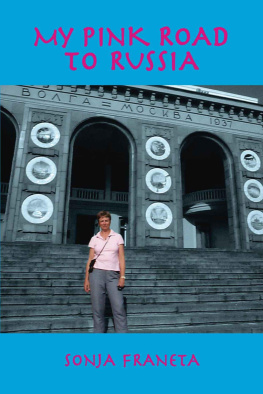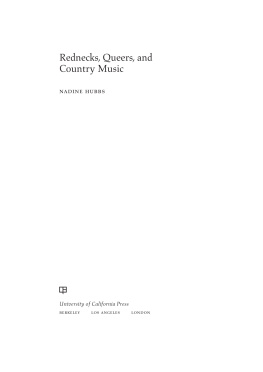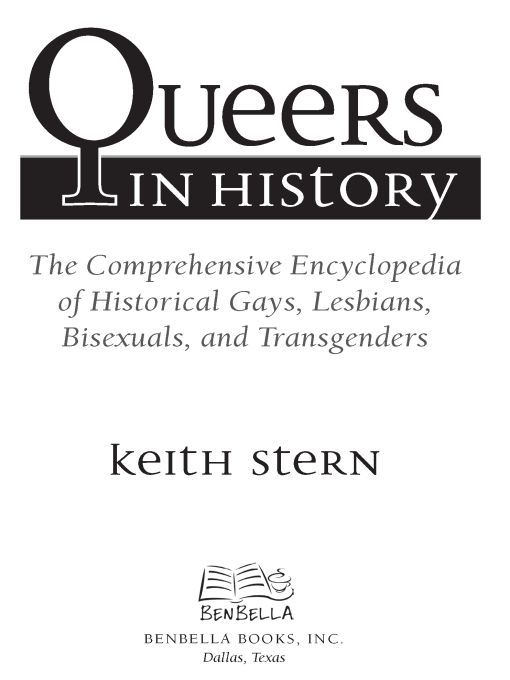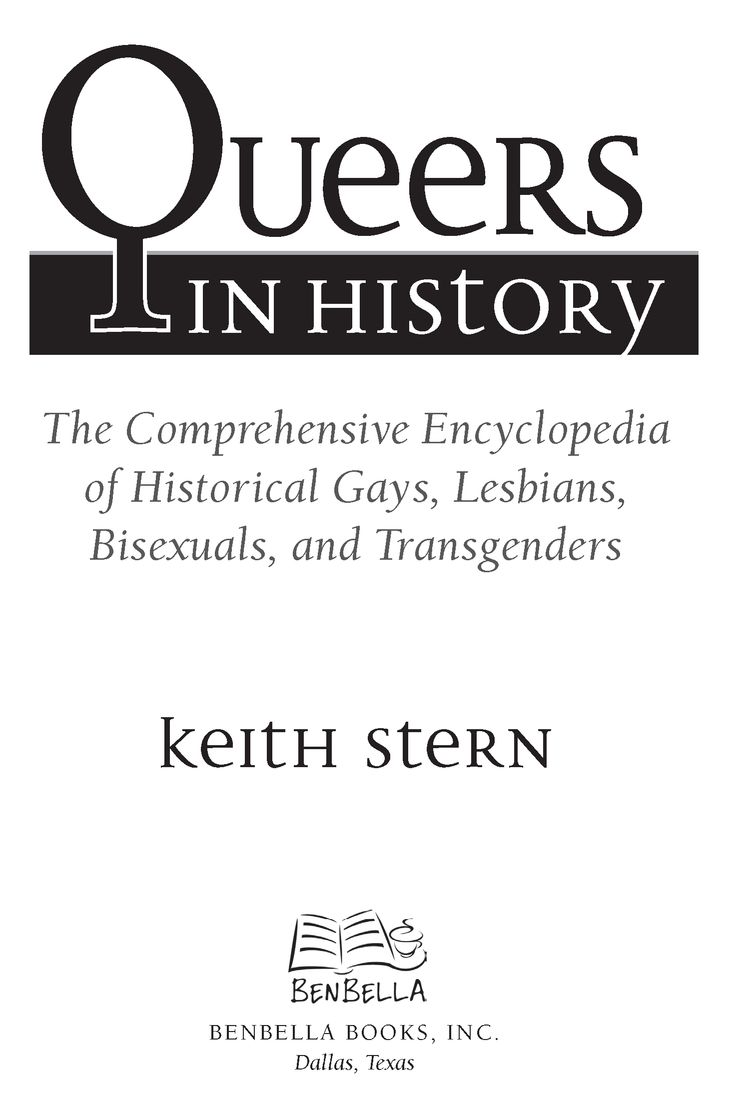Table of Contents
FOREWORD
Growing up as gay was difficult in post-war UK. To begin with, in a land where homosexuality was illegal, we had to accept the laws and language of others to define ourselves. We were criminal and queer and consequently liars and unhappy. In the 1940s the only public acknowledgment of our sort was in the regular slimy sensations in the Sunday tabloids. Even famous nancy boys like Nol Coward, Dirk Bogarde, Benjamin Britten, et al kept their sexuality secret. And beyond them in history, the one incontrovertible queer, Oscar Wilde, was shameful and a warning.
At home, I was silent about lack of girlfriends and I moped. At church, such things were never mentioned. Nor at school, where even sex education was limited to the bees and the flowers they pollinated. So no one was on hand to recommend the wise and beautiful words of Sappho, Edward Carpenter, A.E. Housman, or Walt Whitmanand I felt really alone, with no one and nothing to belong to.
The cracks in societys homophobia, which I was cruelly encouraged to share, only appeared with Peter Wildebloods 1955 report on his homosexuality and imprisonment in Against the Law. Ten years after, there was a small relaxation of UK law and Joe Ortons openly gay plays were produced in the theatres of Londons West End. Then, in 1969, the Stonewall riots taught us that we could and should begin to stand up for ourselves, not only in a Greenwich Village bar but right across the civilized world.
The subsequent avalanche of books by gay people about themselves and all of us may seem an unnecessary indulgence to well-adjusted heterosexuals, though even they have much to learn from the lives of gay people. For those who have ever felt abandoned by history and plagued with injustice, this latest sample of gay experience will be a comfort and a joy.
As you turn the pages, you may gasp I never knew! and Surely not and Listen to this! Keith Stern is a rare historian who reports his findings with wit and passion, and he can be trusted. But if one or two of the names entered in his engaging list are doubtful about their inclusion, perhaps they wont, on reflection, object much to being between the sheets with Michelangelo and Armistead Maupinwhat could be cozier?
Ian McKellen
London, 2009
INTRODUCTION
In 1993, I happened to read a magazine article about Leonardo da Vinci. It mentioned, as an aside, that he was believed to have been gay. This was no great shock. Id already read other articles that alluded to rumors about the original Renaissance Man. A few days earlier Id seen something about Michelangelo that made similar reference to his sexual orientation. These were more or less accepted facts among historians, enticing tidbits of seemingly slight significance.
But something clicked in my mind that day. Sure, I knew something about Leonardo and Michelangelo, Shakespeare and Marlowe, Alexander the Great and Walt Whitman. But I didnt know for certain why these people were thought to have been homosexual. I wondered how many other famous historical figures might also have been gay. I thought if I really applied myself to the task, I might come up with a list of fifty prominent people who I could prove were gay, lesbian, or bisexual. Now, that would be interesting!
It took me about a week in the library to uncover fifty. Being a computer geek, I naturally put my list into a database program recording their name, birth date, birthplace, and profession. By the time I had 100, I was excited, and started sharing with friends the startling information I was digging up.
I took a diskette of my database to A Different Light, a gay/lesbian bookstore in West Hollywood, California. Mark Simon, the manager, popped it into his back office computer. His store had not sold any computer softwarenew media was a buzzword without much substance in 1993. Mark told me to make a dozen copies and hed put it on sale to see what would happen. I made a trip to Office Depot to buy blank diskettes, plastic envelopes, a cardboard box, a roll of tape, and glossy pink paper. The next day I delivered the first order, and Mark put it on display near the cash register.
A day or two later I stopped in to check on sales and all the disks were gone. I refilled that order many times for A Different Light and eventually my disks were on sale at over 600 bookstores around the world, including Borders, Barnes & Noble, Waterstones, and WH Smithone of the first CD-ROMs to be successfully distributed through bookstores.
Major newspapers and magazines took note, and my database received glowing reviews in Wired, The Village Voice, and even USA Today. While praising the educational and entertainment value of my work, some of the early reviewers had a hard time accepting the fact that all these people were gaysurely Cary Grant could not really have been bisexual! Now the pendulum has swung the other way. Today it sometimes seems celebrities are presumed gay (at least in the tabloids) until proven otherwise. Ive tried in this book to stick to the facts.
As I researched the rumored lives of hundreds of gay and lesbian people, I found that their sexuality was more than just an interesting footnote to their personal biographies. I began to see that most of them had been significantly affected by the unconventional inclinations of their libidos. Although the people in this book might have been extraordinary even if they had been entirely straight, Queers in History documents the surprising extent to which the curves of their private lives influenced their public work. Lesbian and gay authors often included homoerotic elements in their writings. Gay painters expressed their personal passions in the content of their artwork. Gay religious leaders transformed their same-sex urges into non-sexual energies that added intensity to their love of God and of humankind.
Most mainstream historians consider the sexuality of historical individuals to be meaningless, because the notion of a gay identity is a modern construct. They think if, in the past, two men or two women claimed to be united in a bond of love, they must have meant it in a friendly non-sexual way. If those same-sex couples actually were having sex, historians would have us believe they didnt think of themselves as being romantically in love. And even if they were, the experts claim it supposedly didnt impact their public lives and accomplishments. The facts in this book prove the experts wrong.
Queers in History presents the stories of famous people from the beginning of recorded time into the twenty-first century. People often ask me, How do you know they were gay? After all, homosexuality has been a deeply private or even secret aspect of peoples lives. Even so, some historical records exist. Luckily, over the years, people have written each other letters. It is in their correspondence that many of my subjects revealed their innermost thoughts and private experiences. Diaries and memoirs, often published posthumously, are another important source of information.
People in the past were more open about their sexuality than we might expect, especially with their close friends and associates. Much of the stigma of homosexuality has arisen in relatively recent decades and was not so strong in the eighteenth century and prior. Perhaps people tended to mind their own business more when the world was less crowded. In fact, throughout much of the pre-modern world, in Japan, China, Russia, India, Persia, Greece, Rome, Africa, Polynesia, and among American Indians, homosexuals were open and respected members of society.


